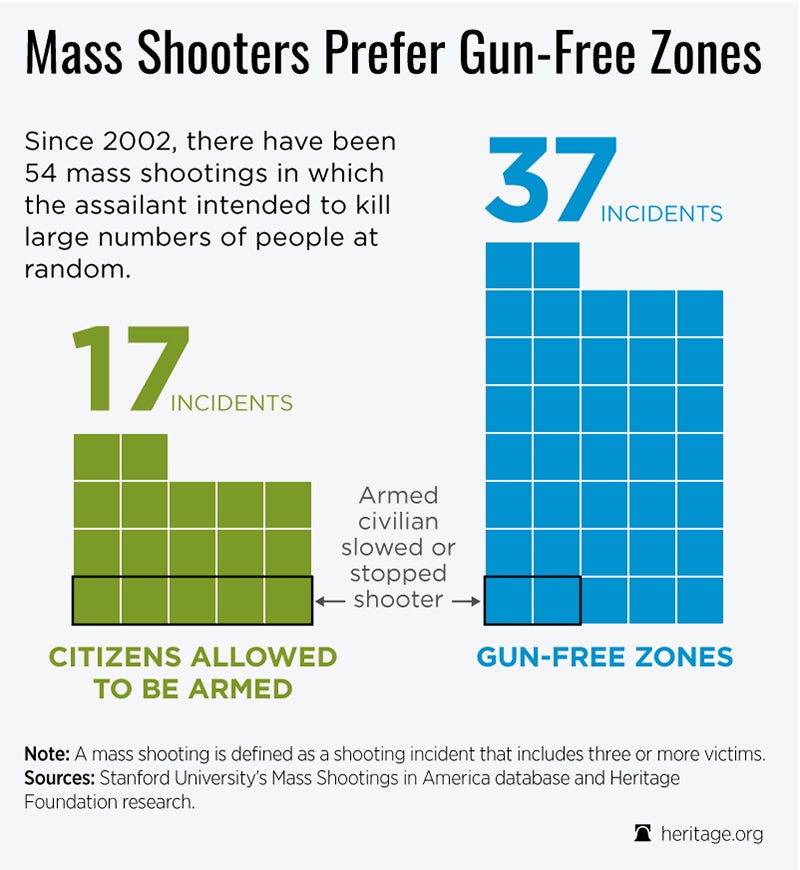Mass Shooters Prefer Gun-Free Zones
Patrick Tyrrell /
An analysis of mass shootings in the United States since the year 2002 shows that gun-wielding mass killers are more likely to strike where the Second Amendment right to bear arms has been supplanted by “gun-free zone” ordinances, be they federal, local, or specified by the owner of the property.
The Stanford University Libraries’ dataset of mass shootings (“Stanford Mass Shootings in America, courtesy of the Stanford Geospatial Center and Stanford Libraries”) was analyzed for mass shootings over the past 14 years.
The definition of a mass shooting for the Stanford database is three or more shooting victims injured or killed, not including the shooter. Shootings that are gang- or drug-related are not included.
The dataset includes 153 incidents going back to the beginning of 2002.
Research done at the Heritage Foundation found that fifty-four of the 153 incidents (35 percent) involved a shooter targeting people at random who were not relatives or adversaries of the attempted murderer.
Of the 54 incidents that fit these criteria, the shooter chose locations where guns were banned 37 times (69 percent). Alternatively, the shooting occurred where guns were legally allowed only 17 times (31 percent). See graphic.
Of the 17 shootings that occurred where citizens could legally carry firearms, 5 (29 percent) were ended when the gunman was stopped or slowed by a gun permit holder’s intervention.
If you have a choice to be in a gun-free zone or a legal-to-carry setting, you are less likely to be the victim of a mass shooting where it is legal to carry guns. All else being equal, if a killer can strike where he is less likely to face lethal law-abiding resistance from ordinary citizens, he will.

